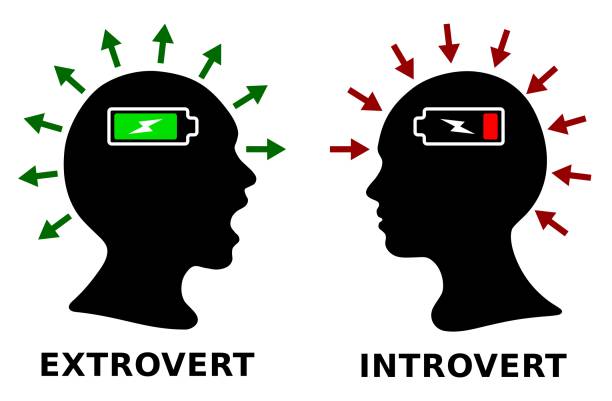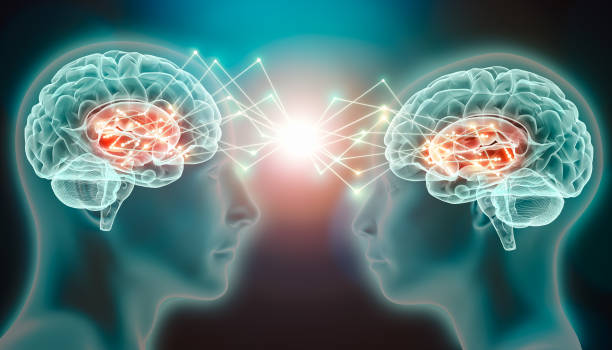Picture this: You’re watching a movie. The character on screen is weeping—shoulders trembling, eyes swollen with sorrow. You feel your throat tighten. You blink away tears. You know these aren’t your tears. You know this isn’t your grief. But something inside you stirs as if it were.
Why?
What force bridges the chasm between their pain and your heart?
That force is empathy—the invisible, intricate emotional circuitry that allows one human being to feel with another. It is the glue of relationships, the heartbeat of compassion, the language of connection. Without it, our world would collapse into cruelty and isolation.
But what is empathy, really?
We talk about it often. We ask for it. We crave it. Yet few of us understand where it comes from—what empathy actually looks like in the brain, and why it sometimes feels like a gift and other times like a burden too heavy to carry.
To understand empathy is to take a journey deep into the human mind—into the neurobiology of feeling, the psychology of mirroring, and the ancient pathways that turn us from isolated selves into something far more miraculous:
Us.
The Two Faces of Empathy
Before we dive into the brain’s role in empathy, we need to understand what empathy is—and isn’t.
Empathy is often confused with sympathy or pity. But it is something more primal, more profound. At its core, empathy is the ability to share in another’s emotional experience. It’s feeling with, not for someone. It’s not saying, “I feel sorry for you.” It’s saying, “I feel it too.”
Neuroscientists divide empathy into two main types:
- Affective Empathy – The visceral, emotional part. This is when you feel someone else’s joy, sadness, or fear in your own body. It’s automatic, fast, and often overwhelming.
- Cognitive Empathy – The mental, imaginative part. This is when you understand what someone is feeling and why, even if you don’t feel it yourself. It’s slower, more rational, and crucial for perspective-taking.
In healthy people, both work together. But in different brains, these systems can operate unevenly. Some people feel everything but understand little. Others can analyze emotions without truly feeling them. And some—those with certain disorders—may struggle with empathy altogether.
So where do these emotional miracles happen?
Let’s look inside.
The Mirror Within: Your Brain’s Empathy Network
When you see someone smile, your brain does something astonishing.
It mirrors them.
Quite literally, your brain fires the same neurons that would activate if you were smiling. These are called mirror neurons, and they’re the neurological backbone of empathy.
Discovered in the 1990s by Italian neuroscientist Giacomo Rizzolatti, mirror neurons were first observed in monkeys. Researchers noticed that the same neurons lit up when a monkey grasped a peanut and when it watched someone else do it.
But the implications went far beyond snacks.
In humans, mirror neurons are believed to help us understand not just actions, but intentions and emotions. When you see someone cry, your brain lights up in many of the same regions as if you were crying yourself.
This neural mirroring creates a simulated experience. Your brain constructs a version of what the other person is feeling—so real, it can physically move you to tears.
That’s the heart of affective empathy.
But empathy doesn’t stop there.
It also activates other key regions:
- The anterior insula, which helps you feel bodily emotions.
- The anterior cingulate cortex, involved in processing pain—your own and others’.
- The medial prefrontal cortex, crucial for understanding another person’s point of view.
- The temporoparietal junction (TPJ), which allows you to mentally “stand in someone else’s shoes.”
This web of brain regions forms what scientists call the empathy network—a dynamic, interconnected system that helps us connect, reflect, and respond.
Empathy is not one thing. It is an orchestra.
Empathy Starts Early
Human babies are born vulnerable—but they’re not born indifferent.
In fact, empathy may be wired into us from birth. Within hours of being born, infants cry when they hear the sound of another baby crying. This early mirroring is believed to be the first flicker of affective empathy.
As children grow, their brains build more complex forms of empathy. By age two, many toddlers show concern when others are upset. By age four or five, they begin to develop theory of mind—the ability to understand that other people have thoughts, feelings, and perspectives different from their own.
This development parallels massive neural growth in the empathy network.
But empathy isn’t just biological. It’s also shaped by experience.
Children who are nurtured, soothed, and attuned to tend to develop stronger empathy circuits. Those exposed to trauma, neglect, or violence may struggle. Their brains, shaped by survival, often learn to suppress empathy to protect themselves.
Empathy is a seed we’re born with—but one that needs light to grow.
Empathy in Pain and Joy
Empathy is not just about sadness. It also activates in joy.
When someone tells you they got a promotion, and you feel your chest swell with pride—that’s empathy. When a friend’s laughter makes you laugh harder—that’s empathy. When watching a stranger succeed gives you hope—that’s empathy too.
This is called positive empathy, and it’s just as crucial for bonding as its more painful counterpart.
But the brain’s empathy system is especially attuned to pain—not just emotional pain, but physical. Research using fMRI scans shows that when we see someone in physical distress, such as a person getting pricked with a needle, the same pain-related areas in our own brain light up.
This phenomenon is so strong that even imagining someone else’s pain can trigger our own.
That’s why images of war, poverty, or suffering can leave us nauseous, overwhelmed, or haunted. Our brains don’t fully separate your pain from mine.
We are hardwired to care.
But that caring has a limit.
When Empathy Hurts
There’s a hidden cost to empathy: empathic distress.
When your mirror system is too open—when you feel too much—it can flood your nervous system with pain that isn’t yours. This often happens to caregivers, therapists, healthcare workers, and sensitive individuals who absorb the emotions of others like sponges.
Empathic distress can lead to burnout, numbness, and emotional shutdown.
This is why self-regulation is crucial for sustainable empathy. The most effective empathizers are not the most reactive—but the most resilient. They feel deeply and stay grounded.
Research shows that compassion training, mindfulness, and emotional boundaries can strengthen empathy while protecting the brain from overload.
The goal is not to shut down empathy—but to steward it wisely.
What Happens When Empathy Fails
Not everyone experiences empathy the same way. In certain psychological and neurological conditions, the brain’s empathy network operates differently.
In psychopathy, for example, affective empathy is often severely impaired. Psychopaths may understand what others feel (cognitive empathy), but not feel it themselves. Their mirror systems show reduced activation, especially in areas related to emotional processing.
In autism spectrum disorder (ASD), the picture is more nuanced. While autistic individuals may struggle with some aspects of cognitive empathy (like reading social cues), many possess profound affective empathy—often feeling others’ pain intensely, even if they can’t always express it.
In narcissistic personality disorder, empathy can be inconsistent—sometimes present, sometimes absent—depending on the individual’s emotional maturity and self-awareness.
These differences show us that empathy is not a monolith. It exists on a spectrum, shaped by biology, experience, and culture.
But here’s the hopeful truth:
Empathy can grow.
Training the Empathic Brain
Neuroscience once believed that the brain was fixed after childhood. But we now know it’s plastic—capable of rewiring through experience.
And that includes empathy.
Studies show that practices like:
- Loving-kindness meditation
- Gratitude journaling
- Perspective-taking exercises
- Active listening
can increase gray matter in empathy-related regions like the anterior insula and prefrontal cortex.
Even something as simple as reading literary fiction—especially character-driven stories—has been shown to increase empathy scores, as it strengthens the brain’s ability to imagine other perspectives.
Empathy is not just a trait.
It’s a muscle.
The Social Power of Empathy
Empathy doesn’t just help us connect personally. It shapes entire societies.
Empathetic cultures are more peaceful, collaborative, and just. Schools that teach emotional intelligence reduce bullying. Workplaces that encourage empathy see higher employee engagement, creativity, and retention.
Empathy fuels activism. It drives us to stand up for those who suffer. To speak out when others are silent. To imagine lives we haven’t lived—and fight for justice anyway.
But empathy can also be biased.
Our brains are more likely to empathize with those who look like us, sound like us, believe like us. This is called in-group bias, and it’s deeply embedded in our neural wiring.
The challenge, then, is to expand empathy beyond our tribe. To make the unfamiliar feel familiar. This requires deliberate effort, exposure, humility, and unlearning.
But it’s possible.
And it’s urgent.
Because our survival—politically, socially, ecologically—depends not just on knowledge, but on empathy that extends across borders, beliefs, and backgrounds.
Empathy and the Future of Humanity
We live in a time of profound disconnection.
Loneliness is epidemic. Polarization is deepening. Technology isolates even as it connects. And yet, amid this, the human brain still longs—for connection, resonance, belonging.
Empathy is not a luxury. It’s an evolutionary advantage. A survival tool. A moral compass. The neural fabric that binds us.
And perhaps, it’s also a kind of spiritual intelligence—something that transcends neurons and enters the realm of meaning.
Because when we feel with each other, we remember something essential:
That we were never meant to go through this life alone.
The Final Word: What Your Brain is Telling You
Every time you listen without judgment…
Every time you comfort someone in pain…
Every time you feel joy at another’s success…
Your brain is not just reacting.
It’s speaking.
It’s saying: This matters. This is human. This is real.
Empathy is not weakness. It is not softness. It is strength wrapped in tenderness.
It is the brain’s quiet rebellion against indifference.
And the soul’s loud answer to the question: Am I alone?
The answer—written in mirror neurons, insulae, and prefrontal cortex, but also in poetry, lullabies, and open arms—is always the same:
No. You are not alone. I feel it too.






